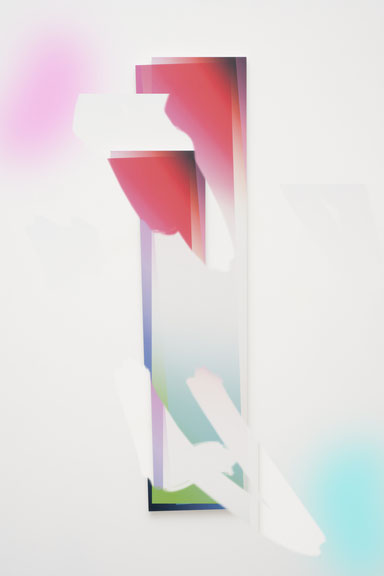Open file … (double click), Tools: Dodge Tool, Clone Stamp Tool, Mixer Brush Tool …, Layer: Flatten image – Save for Web & Devices, feed into the World Wide Web and then: share, share and share again.
The fact that images nowadays can be easily edited and reproduced at any time, with the result that the selfsame image circulates in innumerable variations and contexts, has become a truism in a visual culture that has now permanently embraced the remix tools and cut & paste methods. In his project »Image Objects« (since 2011, New York-based artist Artie Vierkant however explores the question of how these mediated images relate to reality, how digital documents make their way out of the computer into the three-dimensional space and back, and, finally, how art production is subject to contemporary forms of image formation between real and digital space.
According to the description on the artist's website, his image objects are a series of works that »exists somewhere between physical sculptures and altered documentation images«. Each of his works begins life as a digital document: colour gradients created per mouse click using Photoshop tools and provided by the program as templates, semi-transparent geometrical forms that overlie one another so that the different nuances blend to form new colour variations, and reproductions that cause the viewers to be in two minds as to whether the element of recognition results from the similarity between the elements in the image or from the arbitrariness of the abstractions. Only the presentation as colour prints on thin panels and the way the motifs and forms produced by the artist are cut to size give the image objects a sculptural presence in the exhibition space in which they are hung, stood or laid. Until this has happened, Artie Vierkant's artistic method can be described in brief as digital painting – if not as banal.
The next step, however, which addresses themes such as omnipresent authorship in the World Wide Web, the collapse of physical space brought about by network structures and the endless reproducibility of digital materials, turns Vierkant's »Image Objects« into an expression of a zeitgeist that combines the methods of reflection on media used in internet-based art of the 1990s with a current trend towards playful formalism. Each time one of the »Image Objects« set up by the artist or those in charge of the exhibition space is documented, Vierkant changes the digital documentation of the installed object by means of a picture editing program, thus creating new forms and derivatives of the already repeatedly processed image. The computer-generated picture bars, gradients and superimpositions, which originally formed the foreground of the image content, now recede into the background; they are re-collaged, given digital watermarks and processed using techniques familiar from professional image retouching. This oscillation between the physical presence of the »Image Objects« in the exhibition space and their potential to take on innumerable other forms of representation – whether on the World Wide Web or in other mass media – is, finally, what causes the documentation of a work to turn here into a new work at the hand of the artist and thus to make its way back to the exhibition space.
»The strategy employed by myself and others towards this physical relationship has been to create projects which move seamlessly from physical representation to Internet representation,« Vierkant writes in »The Image Object Post-Internet« (2010, Jstchillin.org), an essay that describes not just his own working methods, but also that of a younger generation of artists who work at the interface between real and digital life and try to break down the boundaries between them: the representation through image, rigorously controlled and edited for ideal viewing angle and conditions, almost always becomes the central focus. It is a constellation of formal-aesthetic quotations, self-aware of its art context and built to be shared and cited. It becomes the image object itself« - and, it could be added, the image object ends up as an an attitude.
Image-objects.com
Translated by Tim Jones
